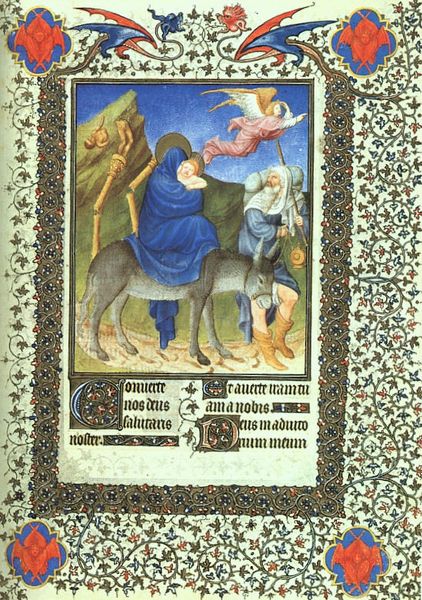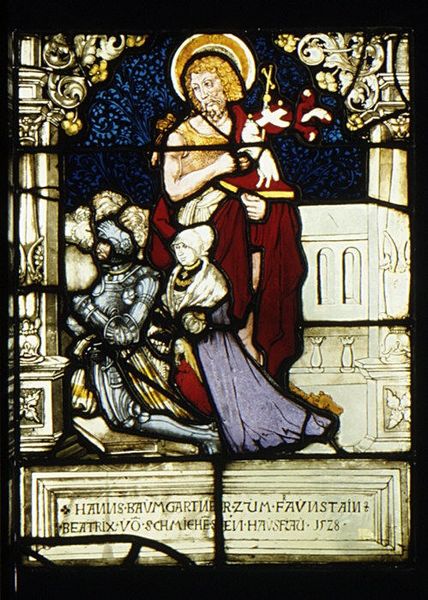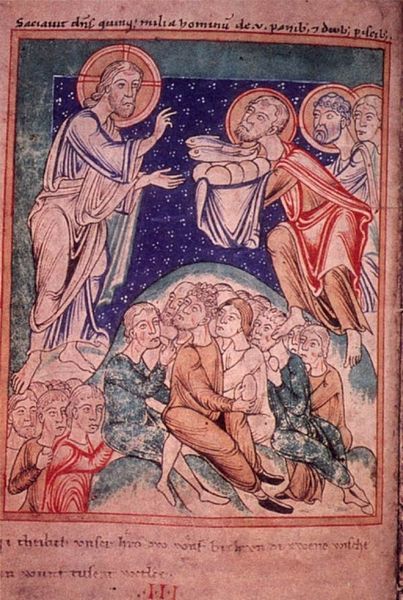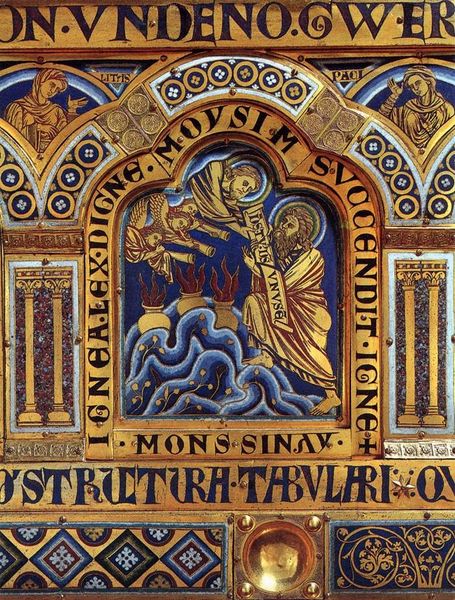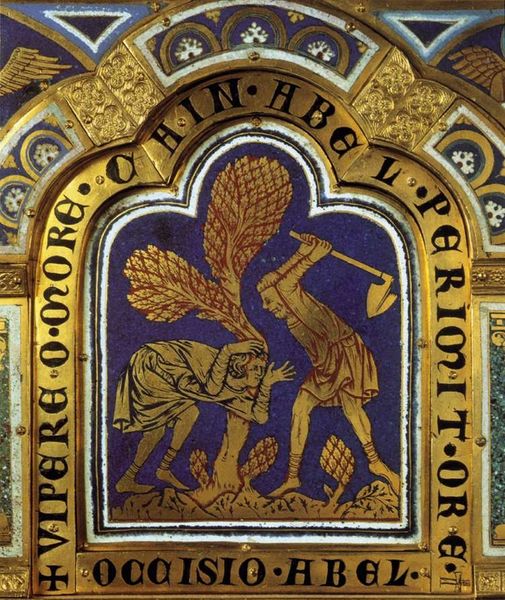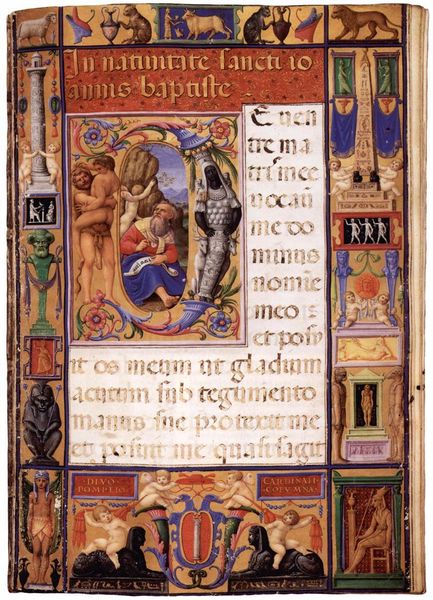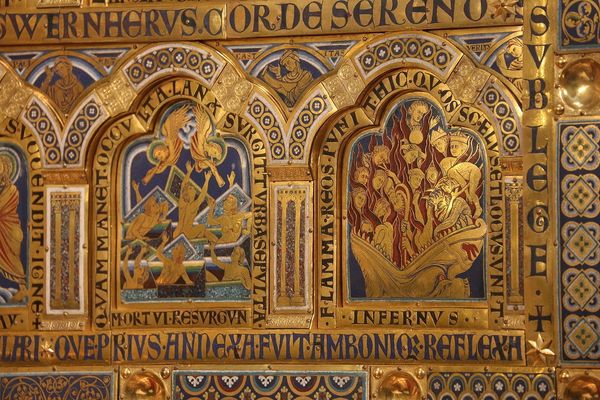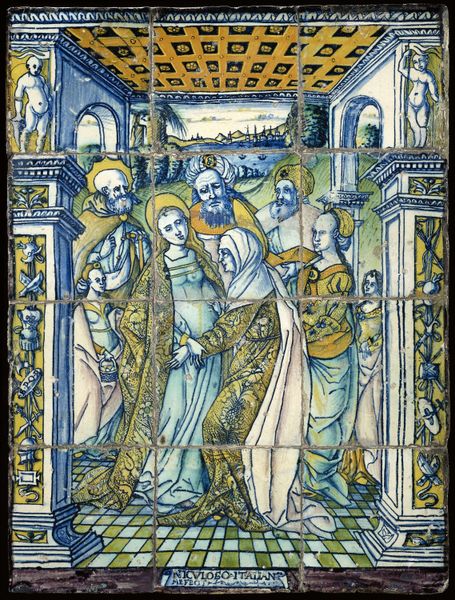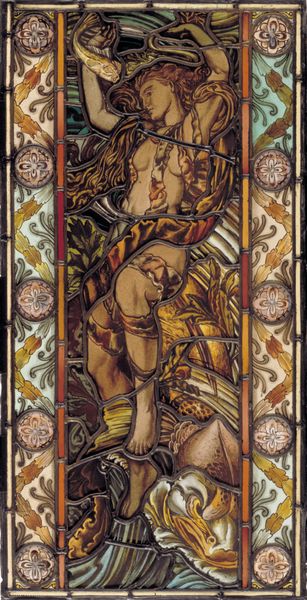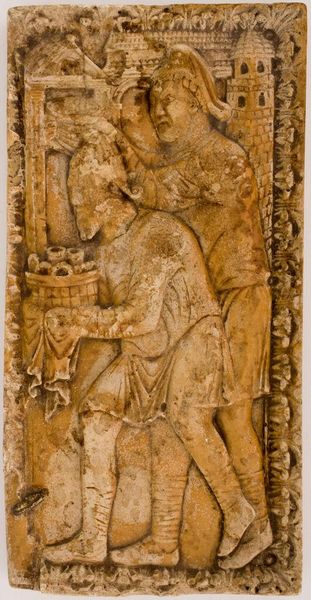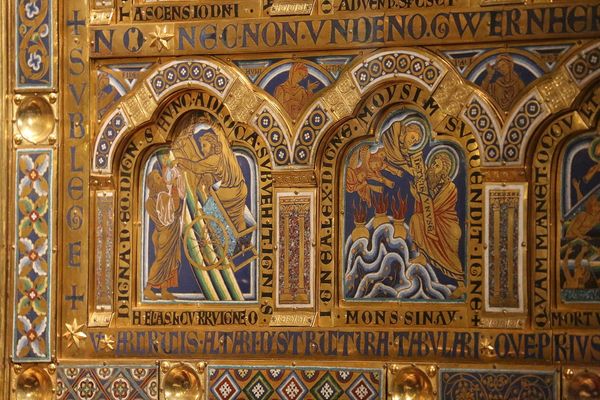
carving, gold, sculpture
#
medieval
#
carving
#
narrative-art
#
sculpture
#
gold
#
figuration
#
romanesque
#
sculpture
#
history-painting
Copyright: Public domain
Editor: We’re looking at "Samson and the Lion" by Nicholas of Verdun, created around 1181. It’s a gold carving, depicting the biblical story. The intensity is striking – you have Samson locked in this fierce battle. What stands out to you about this piece? Curator: What immediately grabs me is how this panel participated in medieval religious and political discourse. Its public function in a grand altarpiece positioned this image as more than just a biblical illustration. It becomes an active participant in defining societal values. Think about the Romanesque period, a time of strong religious belief and developing political structures. Editor: So, you're saying the panel served a specific cultural role, more than simple decoration. How does the artistry contribute to that? Curator: Exactly. Consider the stylization of the figures. Samson, almost idealized, wrestling a lion, both rendered with detailed line work using gold. This wasn’t just about accurate representation; it was about communicating power, divine sanction, and moral strength within the framework of religious and societal expectation. The museum space and gallery it lives in shape how we see the artwork today. What values do you think it upholds? Editor: That makes a lot of sense. It feels like this panel acted as a teaching tool and an emblem of authority at the same time. It reminds me that religious images can also be a statement of worldly power. Curator: Precisely. The piece existed within and contributed to a matrix of faith, politics, and artistic practice. Seeing art in the gallery is just the last layer in its rich story.
Comments
No comments
Be the first to comment and join the conversation on the ultimate creative platform.
